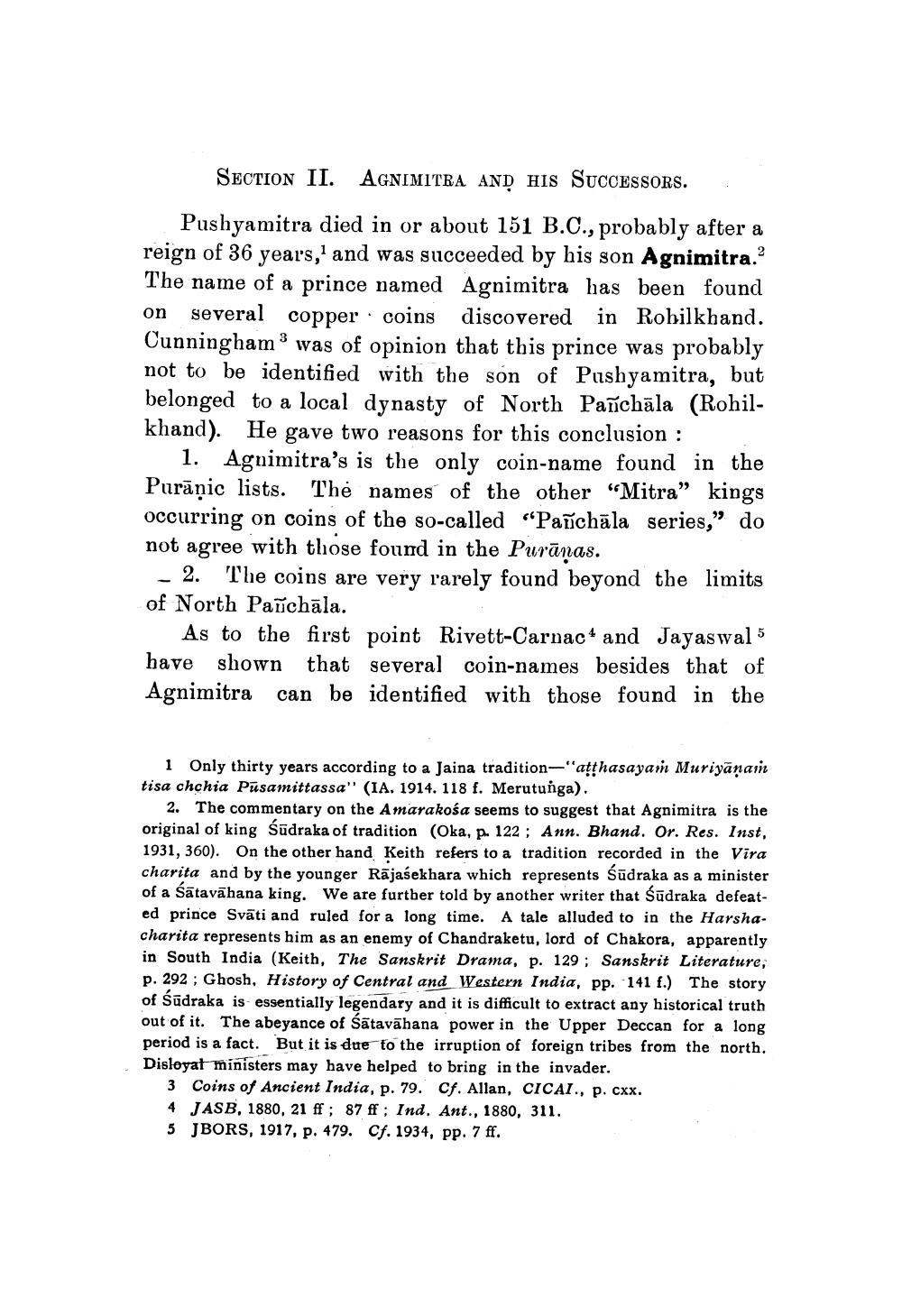________________
SECTION II. AGNIMITRA AND HIS SUCCESSORS.
Pushyamitra died in or about 151 B.C., probably after a reign of 36 years,' and was succeeded by his son Agnimitra.? The name of a prince named Agnimitra has been found on several copper coins discovered in Rohilkhand. Cunningham" was of opinion that this prince was probably not to be identified with the son of Pushyamitra, but belonged to a local dynasty of North Pañchāla (Rohilkhand). He gave two reasons for this conclusion :
1. Agnimitra's is the only coin-name found in the Purāņic lists. The names of the other “Mitra” kings occurring on coins of the so-called “Pañchāla series," do not agree with those found in the Purānas.
- 2. The coins are very rarely found beyond the limits of North Pañchāla.
As to the first point Rivett-Carnact and Jayaswal 5 have shown that several coin-names besides that of Agnimitra can be identified with those found in the
1 Only thirty years according to a Jaina tradition-"atthasayar Muriyanam tisa chchia Pusamittassa" (IA. 1914. 118 f. Merutunga).
2. The commentary on the Amarakośa seems to suggest that Agnimitra is the original of king Śūdraka of tradition (Oka, p. 122 ; Ann. Bhand. Or. Res. Inst, 1931, 360). On the other hand Keith refers to a tradition recorded in the Vira charita and by the younger Rajasekhara which represents Sūdraka as a minister of a śātavāhana king. We are further told by another writer that Śūdraka defeated prince Svāti and ruled for a long time. A tale alluded to in the Harshacharita represents him as an enemy of Chandraketu, lord of Chakora, apparently in South India (Keith, The Sanskrit Drama, p. 129; Sanskrit Literature, p. 292; Ghosh, History of Central and Western India, pp. 141 f.) The story of Sūdraka is essentially legendary and it is difficult to extract any historical truth out of it. The abeyance of śātavāhana power in the Upper Deccan for a long period is a fact. But it is due to the irruption of foreign tribes from the north. Disloyat ministers may have helped to bring in the invader.
3 Coins of Ancient India, p. 79. Cf. Allan, CICAI., p. cxx. 4 JASB, 1880, 21 ff; 87 ff; Ind. Ant., 1880, 311. 5 JBORS, 1917, p. 479. Cf. 1934, pp. 7 ff.




